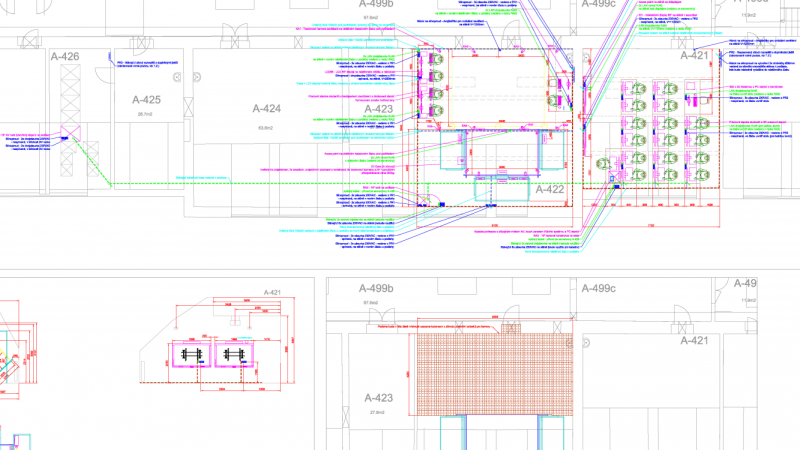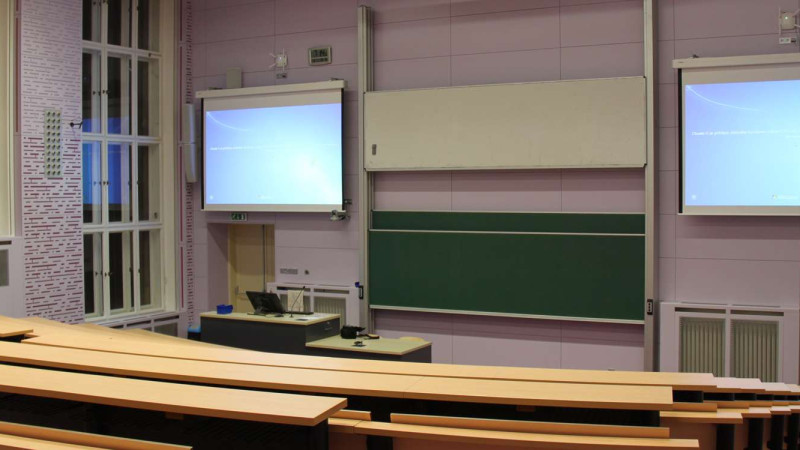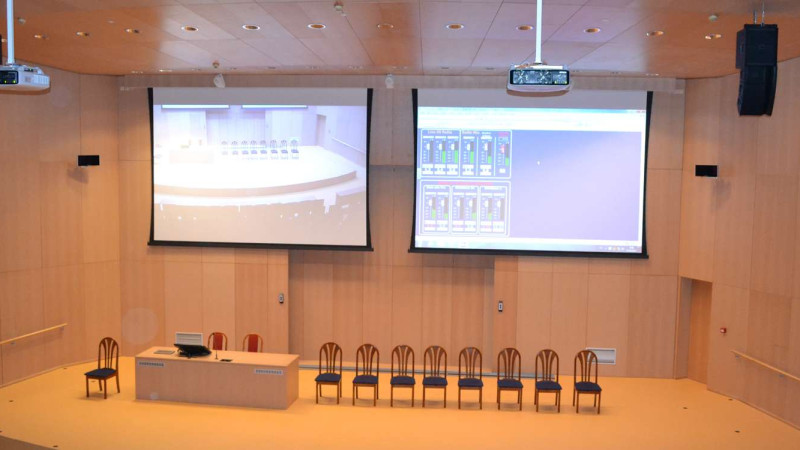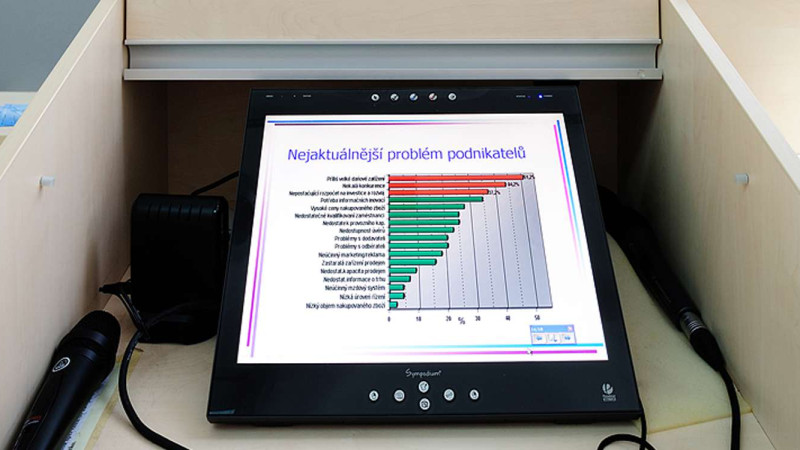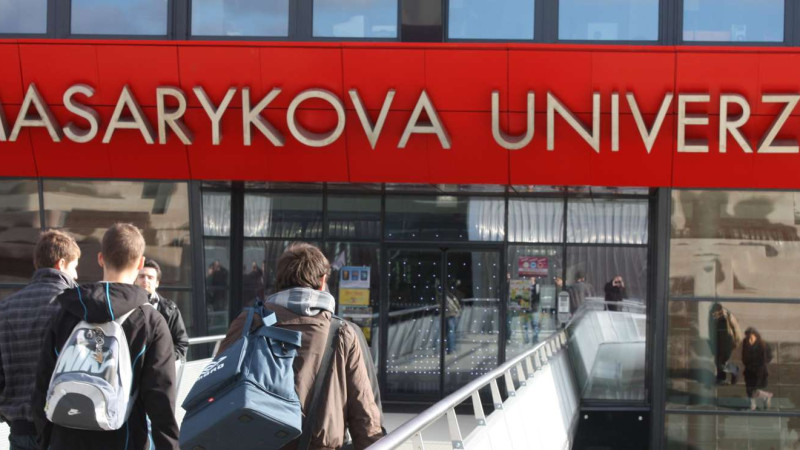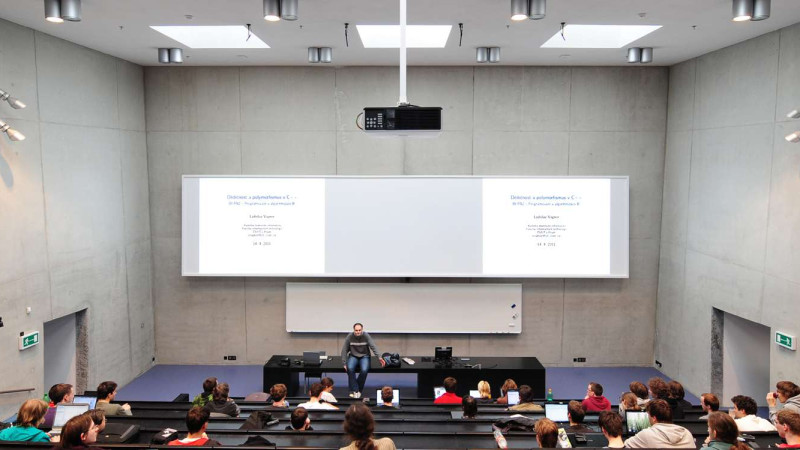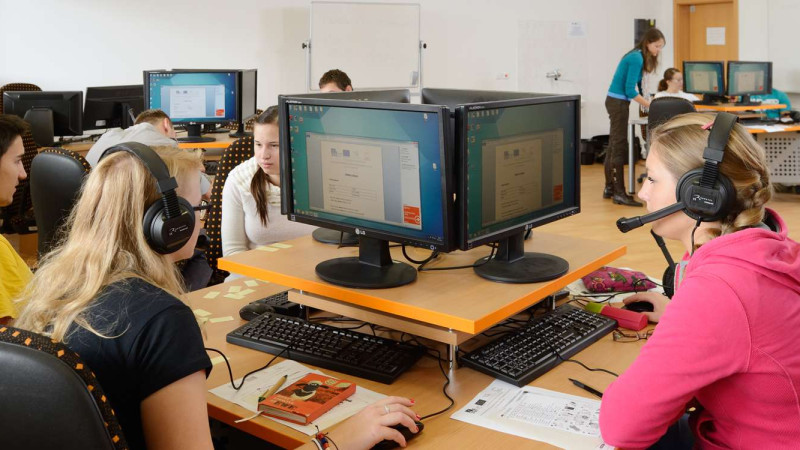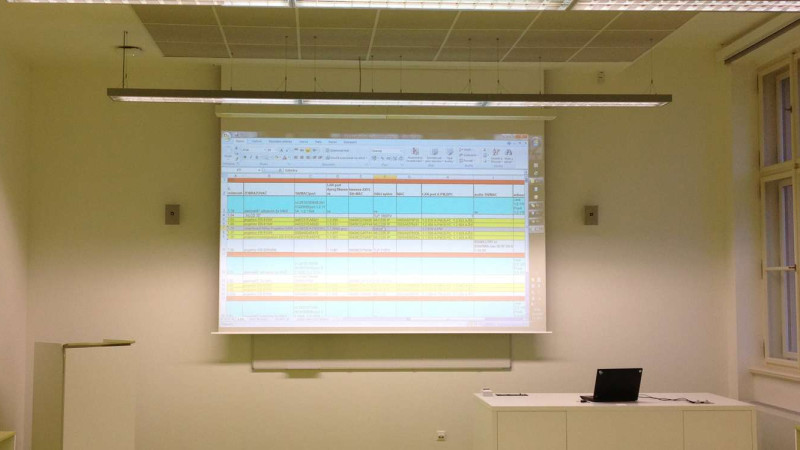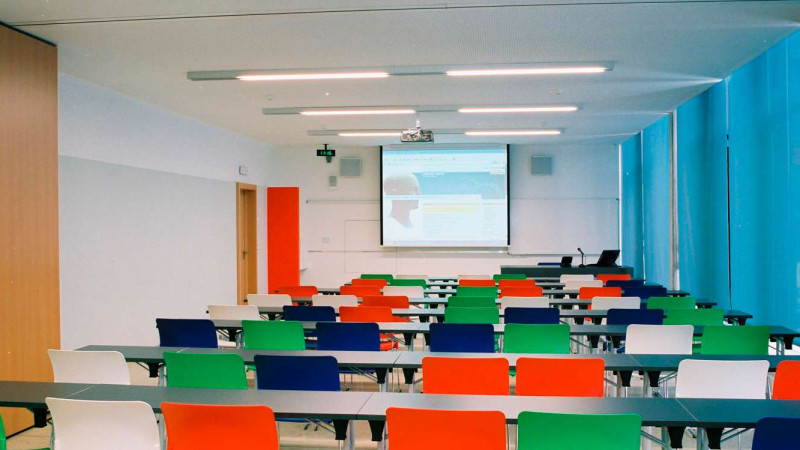
Gait lab at the Faculty of Physical Culture in Olomouc
The laboratory is located in the modern premises of the Centre for Kinanthropology Research.
Patients wearing special reflective sensors move along a track where they are followed by special tracking cameras that record the movement. The recorded movement is converted into a mathematical model that represents the different parts of the limb as line segments, taking different angles according to the position of the joints. Thanks to the perfect recordings of the patient's gait, it is possible to analyse disorders in much greater detail. Special cameras capture the scene in the infra-red area. The cameras separate only the reflective points on the patient from the scene, with an accuracy of hundredths of a millimetre. A huge amount of data is pre-processed directly on the camera before it is sent to the main computer to create a patient model. The sensing chips of these cameras are also unique.
'In the gait lab, we use the Vicon Vantage V5 system for clinical and sports biomechanics tasks. Great attention is paid to the methodological aspect of the kinematic analysis in order to achieve maximum accuracy, reliability and relevance of the acquired data. For almost every project we design and create an original kinematic model to best fit the problem under investigation' says Mgr. Tomáš Klein from the Faculty of Physical Culture.
A selection of activities carried out in the last three years:
-
Walking and running analysis.
- Research in the field of prosthetic and orthotic devices (sensorimotor insoles, prostheses, exoskeletons).
- Analysis of different types of walking shoes (e.g. barefoot, sports shoes).
- Comparison of different concepts of lower limb kinematic models (Plug-In Gait, Conventional Gait Model 2, CAST Six-Degrees-Of-Freedom).
- Comparison of different concepts of kinematic multi-segmental foot models (Oxford Foot Model, CAST Six-Degrees-Of-Freedom).
- Diagnosing the causes and evaluating the effectiveness of therapy in relation to musculoskeletal problems in athletes and general population patients (e.g., non-specific back pain, iliotibial tract syndrome).
- Testing of sports equipment (e.g. prototype bicycle saddle).
Gallery


















